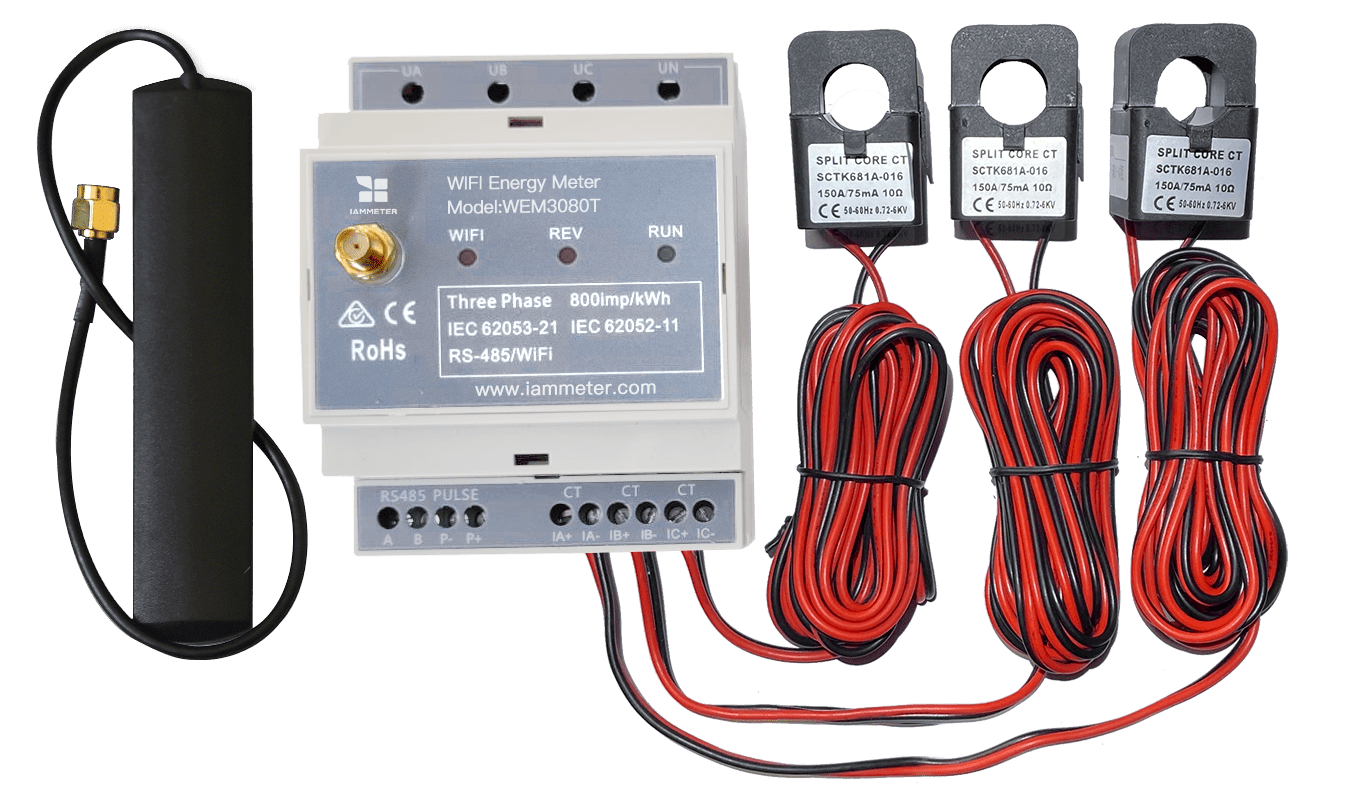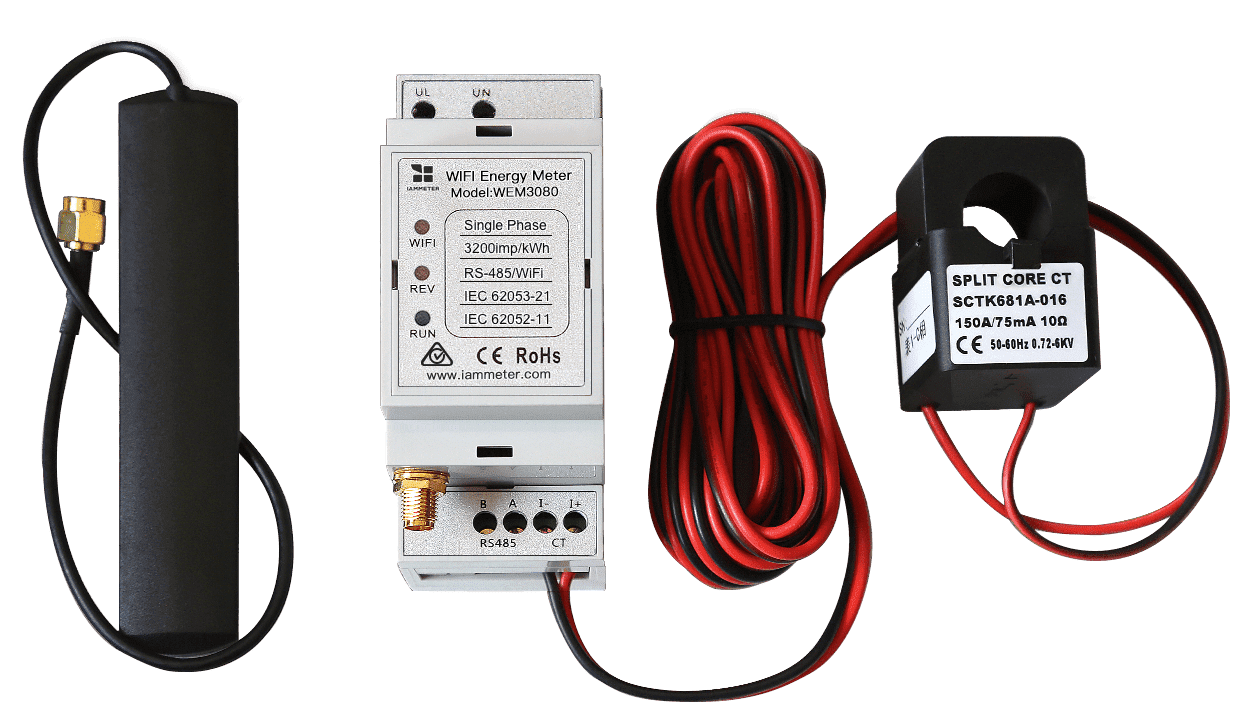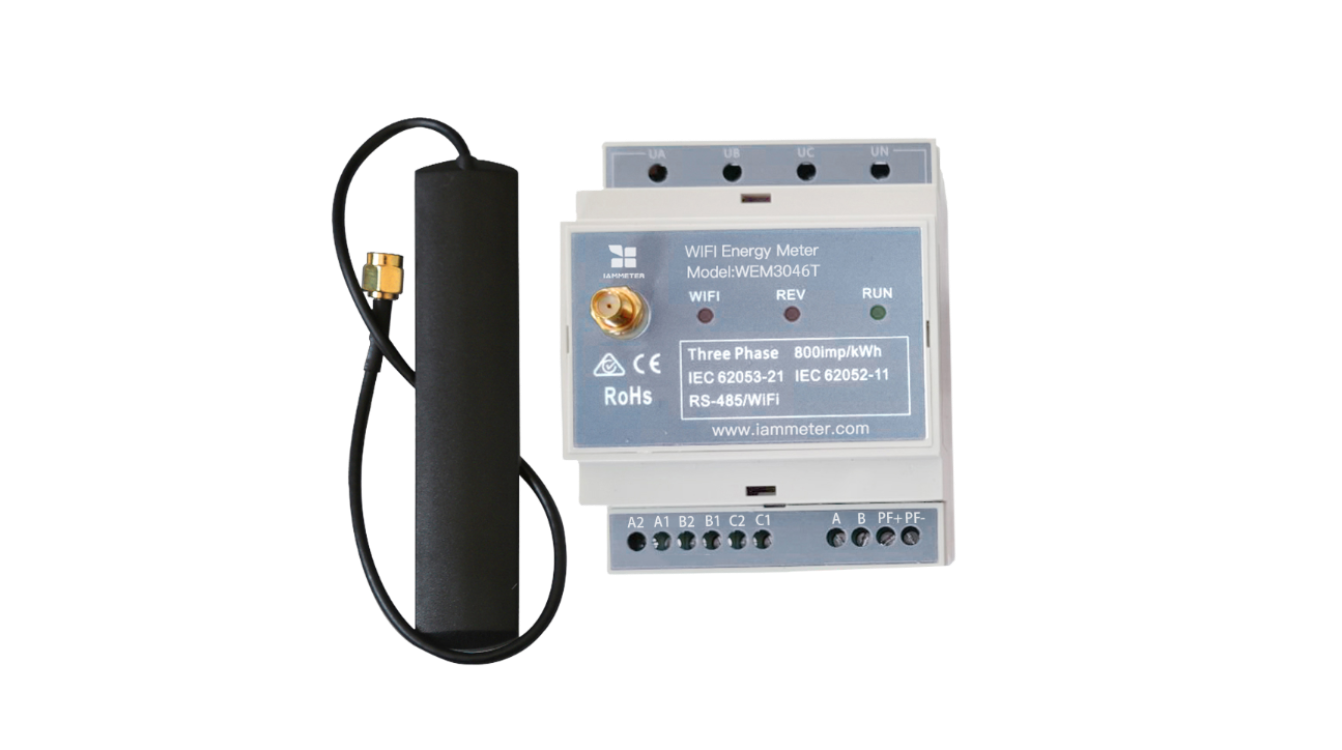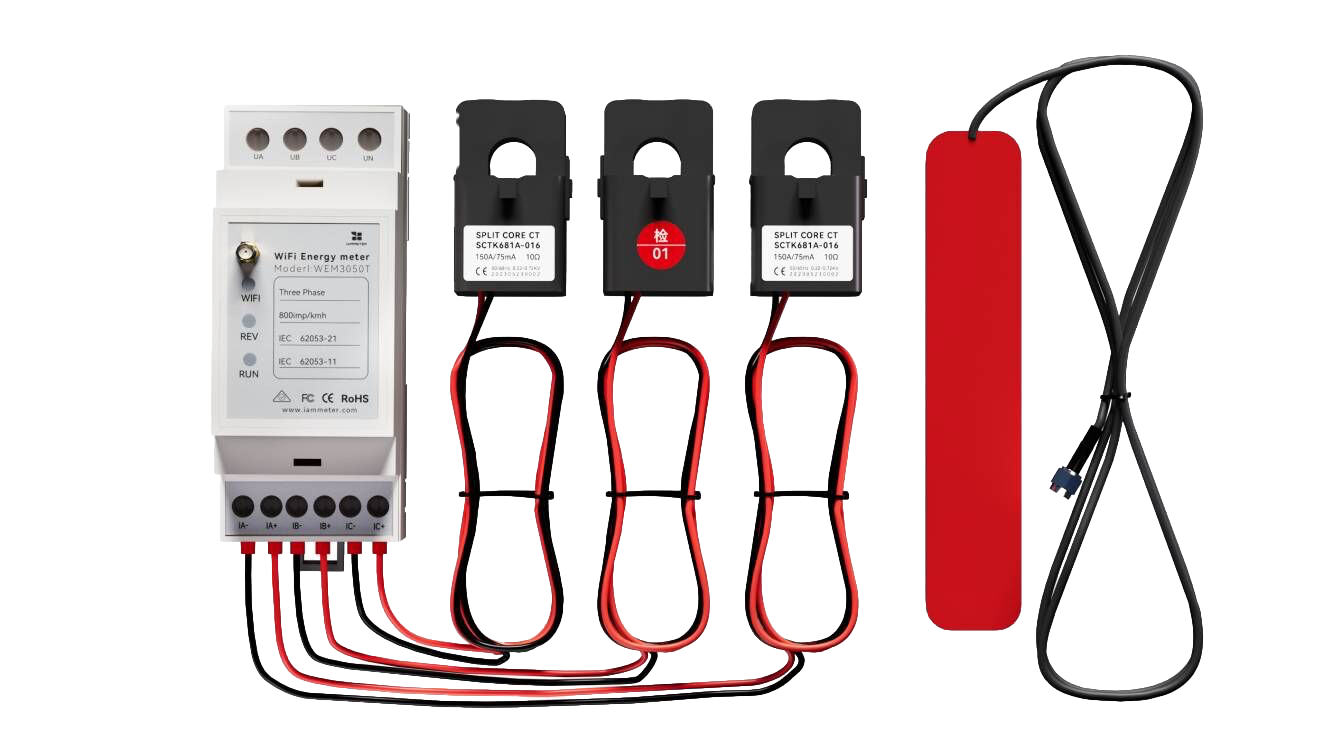IAMMETER Wiring & Installation Guide
⚙️ IAMMETER Wiring & Installation Guide
(for WEM3080T, WEM3080TD, WEM3050T, WEM3046T, and WEM3080)
1️⃣ Introduction
This guide explains how to wire IAMMETER Wi-Fi energy meters safely and correctly for different system types: single-phase, three-phase (WYE or Delta), and split-phase.
It also covers CT installation, phase direction, and how to use a three-phase meter as three independent single-phase meters, which is especially useful in residential solar PV systems.
2️⃣ Safety Notes
- Always disconnect power before wiring.
- Installation should be performed by a qualified electrician.
- Verify that the voltage and wiring match the meter specifications.
- Make sure CTs are installed in the correct direction (K→L).
- Tighten all connections properly to avoid loose terminals.
3️⃣ CT Installation and Direction
IAMMETER meters use external current transformers (CTs) to measure current flow. Each CT has an arrow marked K→L, which indicates the current direction.
- When installed on the grid side, the arrow should point from grid to load.
- When installed on the inverter side, the arrow should point from inverter to grid.
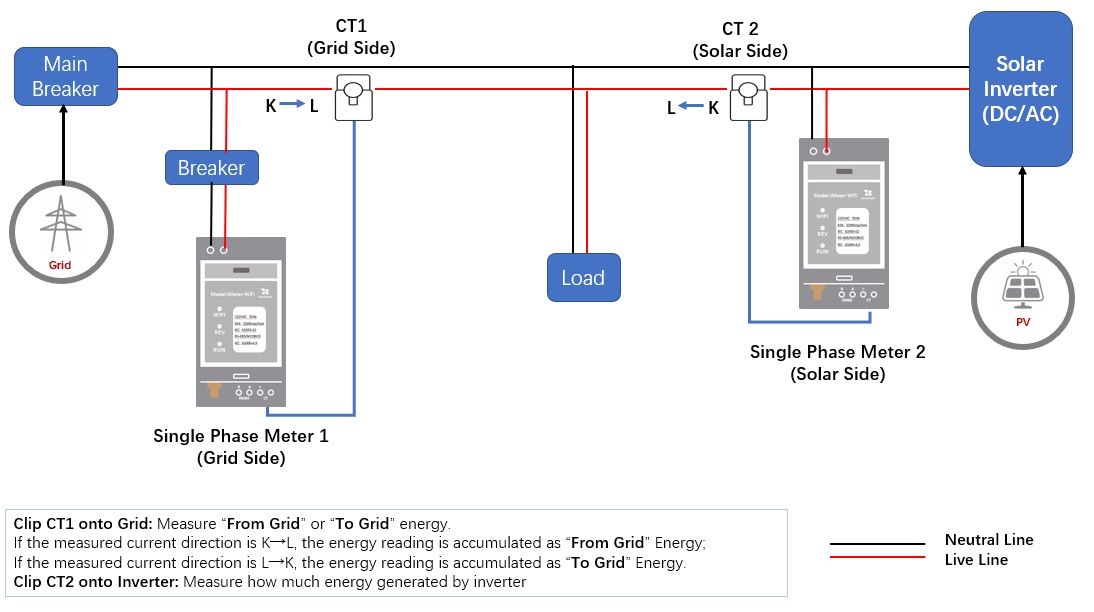
💡 Tip: Reversed CT direction will not damage the meter, but it will cause negative readings or reversed power flow.
4️⃣ Wiring for Single-Phase Systems
(Applicable for WEM3080 and single-phase use cases of WEM3080T/WEM3050T/WEM3046T)
A single-phase system has Live (L) and Neutral (N) wires, with one CT clamped on the load or inverter wire.
Example 1: Measuring Grid Consumption
- Connect Live (L) and Neutral (N) to the meter.
- Clamp the CT around the load wire (arrow toward the load).
Example 2: Measuring Inverter Output
- Connect Live (L) and Neutral (N) to the inverter output.
- Clamp the CT around the inverter output wire (arrow toward grid).

5️⃣ Using a Three-Phase Meter as Three Independent Single-Phase Meters
(Applicable for WEM3080T, WEM3050T, and WEM3046T)
All IAMMETER three-phase meters can also function as three independent single-phase meters. This allows one three-phase energy meter to monitor multiple single-phase circuits at once — for example, a grid line, a load, and a solar inverter output.
Example configuration
- Phase A (CTa) → Grid
- Phase B (CTb) → Load
- Phase C (CTc) → Inverter

If you are using IAMMETER-Cloud, please note that it does not automatically recognize each phase type. You need to manually set the “Use Type” of each phase (for example: “Grid”, “Inverter”, “Load”) after installation. Once you assign the correct types, IAMMETER-Cloud uses your configuration to calculate:
- Direct self-use energy
- Imported and exported energy
- Solar self-use rate
💡 Tip: This configuration enables one three-phase meter to monitor a complete single-phase solar PV system (grid + load + inverter) — reducing hardware cost and simplifying installation.
6️⃣ Wiring for Three-Phase WYE (3-Phase 4-Wire) Systems
(Applicable for WEM3080T, WEM3050T, WEM3046T)
In a WYE system, there are three phase wires (L1, L2, L3) and one neutral (N). Each CT should correspond to one phase line.
Wiring Steps
- Connect L1, L2, L3, and N to the meter terminals.
- Clamp CTa, CTb, and CTc around L1, L2, and L3 respectively (arrows toward load).
- Verify all phases match (CTa → L1, CTb → L2, CTc → L3).
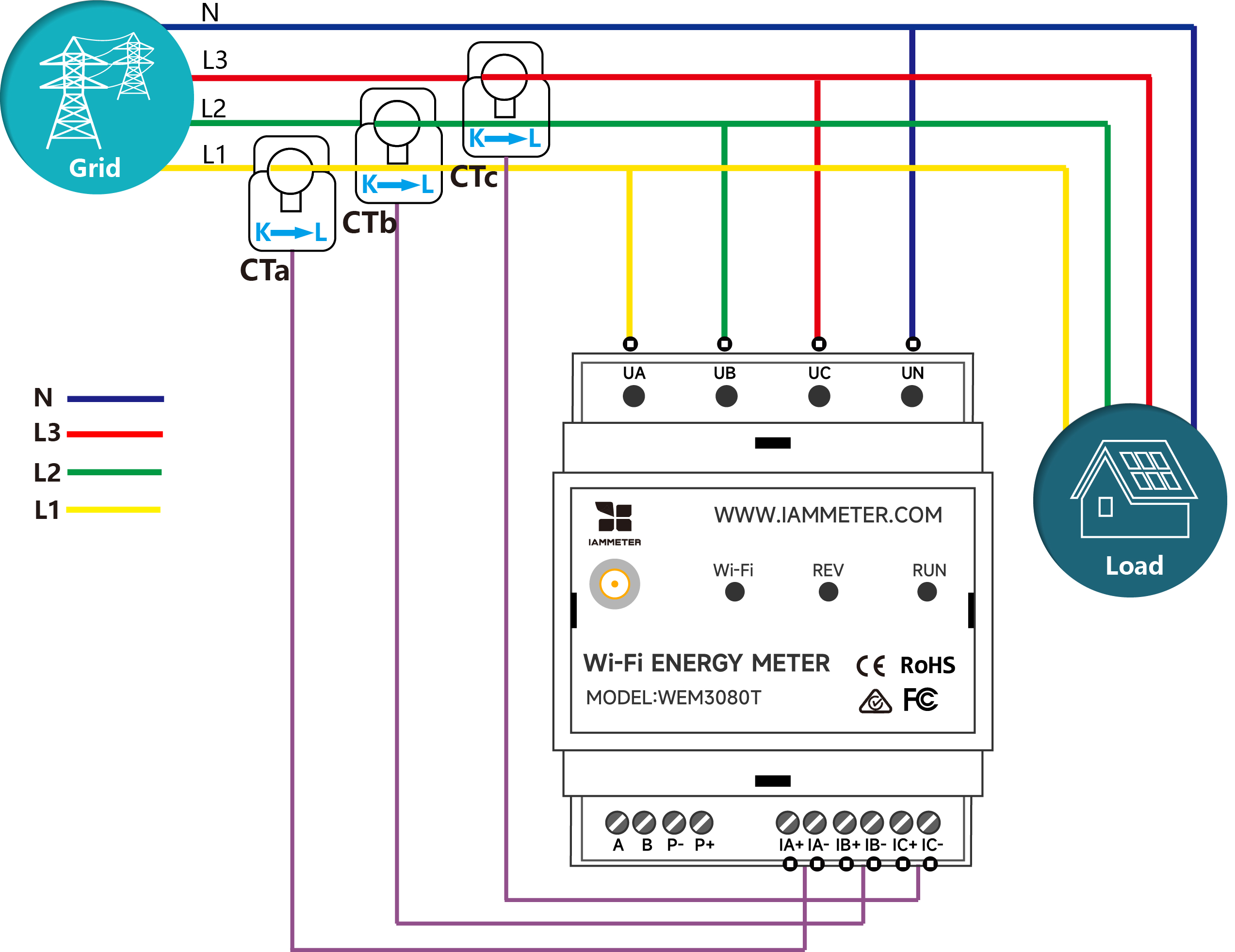
💡 Tip: A “phase mismatch” (CT not matching its voltage input) will cause inaccurate readings.
Three-Phase Solar PV System and 3-Phase Grid System
(Applicable for WEM3080T, WEM3050T, and WEM3046T)
If you have both a three-phase inverter and a three-phase grid, and want to monitor both sides of the system (although monitoring only one side is also possible), you will need two three-phase meters.
- One meter is connected on the grid side to monitor imported and exported energy.
- The other meter is installed on the inverter side to monitor solar generation.
The wiring diagram below shows how to connect both meters in this setup:

💡 Tip: If you are using IAMMETER-Cloud, set their “Use Type” correctly:
- Grid-side meter → Grid
- Inverter-side meter → Inverter
This configuration enables IAMMETER-Cloud to calculate:
- Total generation from the inverter
- Import and export energy with the grid
- Self-consumption rate and export ratio of your PV system
7️⃣ Wiring for Three-Phase Delta (3-Phase 3-Wire) Systems
(Applicable for WEM3080TD)
In a delta system, there is no neutral line. The WEM3080TD is designed specifically for this type of connection.
| Diagram | Description |
|---|---|
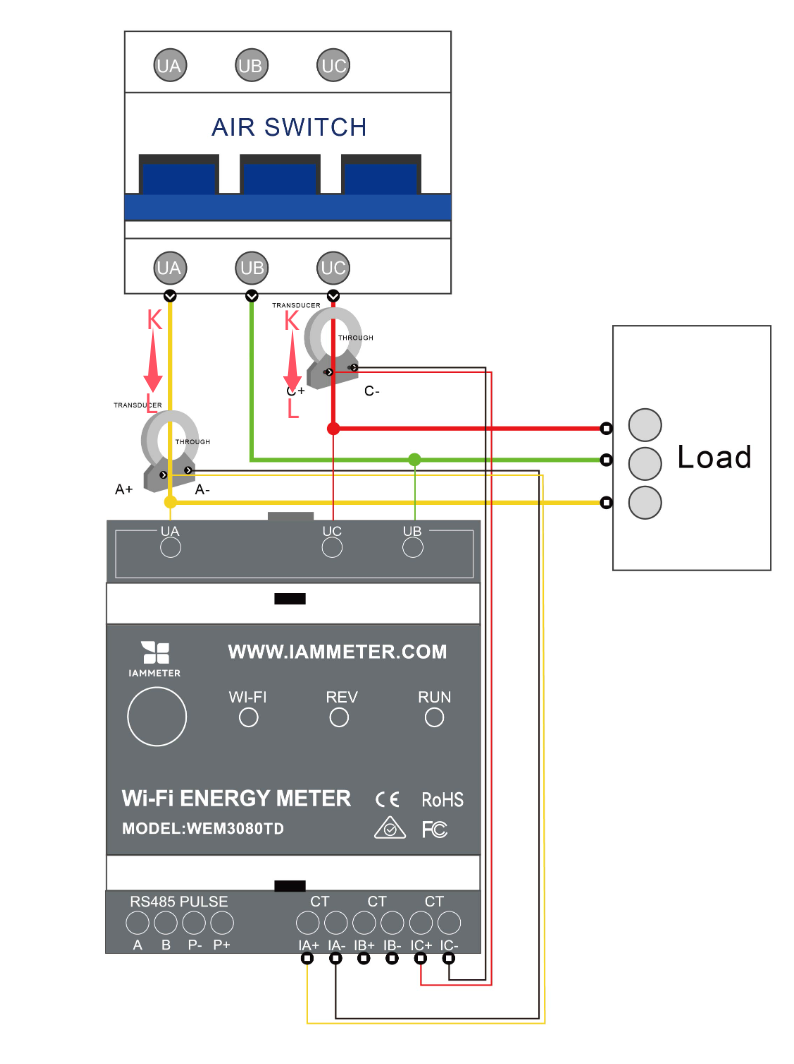 |
UA → Line A UB → Line B (voltage reference) UC → Line C |
CT Connection
- CTa → Line A (K→L toward load)
- CTc → Line C (K→L toward load)
- CTb → Not used (B phase serves as reference only)
📌 Note: In delta mode, Phase B power readings will always show 0 — this is normal and expected.
8️⃣ Wiring for Split-Phase Systems
(Applicable for WEM3080T, WEM3050T, and WEM3046T)
Split-phase systems are common in North America and some other regions. They include two hot lines (L1, L2) and a neutral (N), with 240V between L1–L2 and 120V between each line and neutral.
You can use a three-phase meter to monitor both the grid and inverter in a split-phase system.
Typical Configuration
- Phase A and B → Measure the grid (split-phase supply)
- Phase C → Measure the inverter output
If your inverter outputs balanced power, you can set ctcratio = 2 (either via API or web UI) so the inverter output (Phase C) is doubled for correct total power display.

💡 Tip:
Older firmware requires using the API to set ctcratio.
Newer firmware allows you to configure it directly in the web interface:
Set ctcratio in latest firmware version
9️⃣ Wiring for WEM3046TE
(Split-core CT version — for secondary CT measurement applications)
The WEM3046TE is a special version of the WEM3046T designed for secondary CT measurement. Instead of measuring current directly from the primary conductor, each split-core CT of the WEM3046TE is clamped around the secondary wires of the primary CTs (usually 5A output).
This enables the WEM3046TE to monitor large-capacity electrical systems indirectly, by reading the current from the existing primary CTs’ secondary loops.
Wiring Principle
Each built-in CT of the WEM3046TE works as a secondary CT, detecting the current flowing through the secondary winding (5A output) of the main CTs:
| Parameter | Description |
|---|---|
| Voltage inputs (UA, UB, UC, N) | Connect to the corresponding phase voltages (L1, L2, L3, N). |
| Current sensors (CTa, CTb, CTc) | Clamp around the secondary wires of the primary CTs (CTa, CTb, CTc). |
| CT direction | Keep the same orientation as the primary CTs (arrow K→L following the current flow direction). |
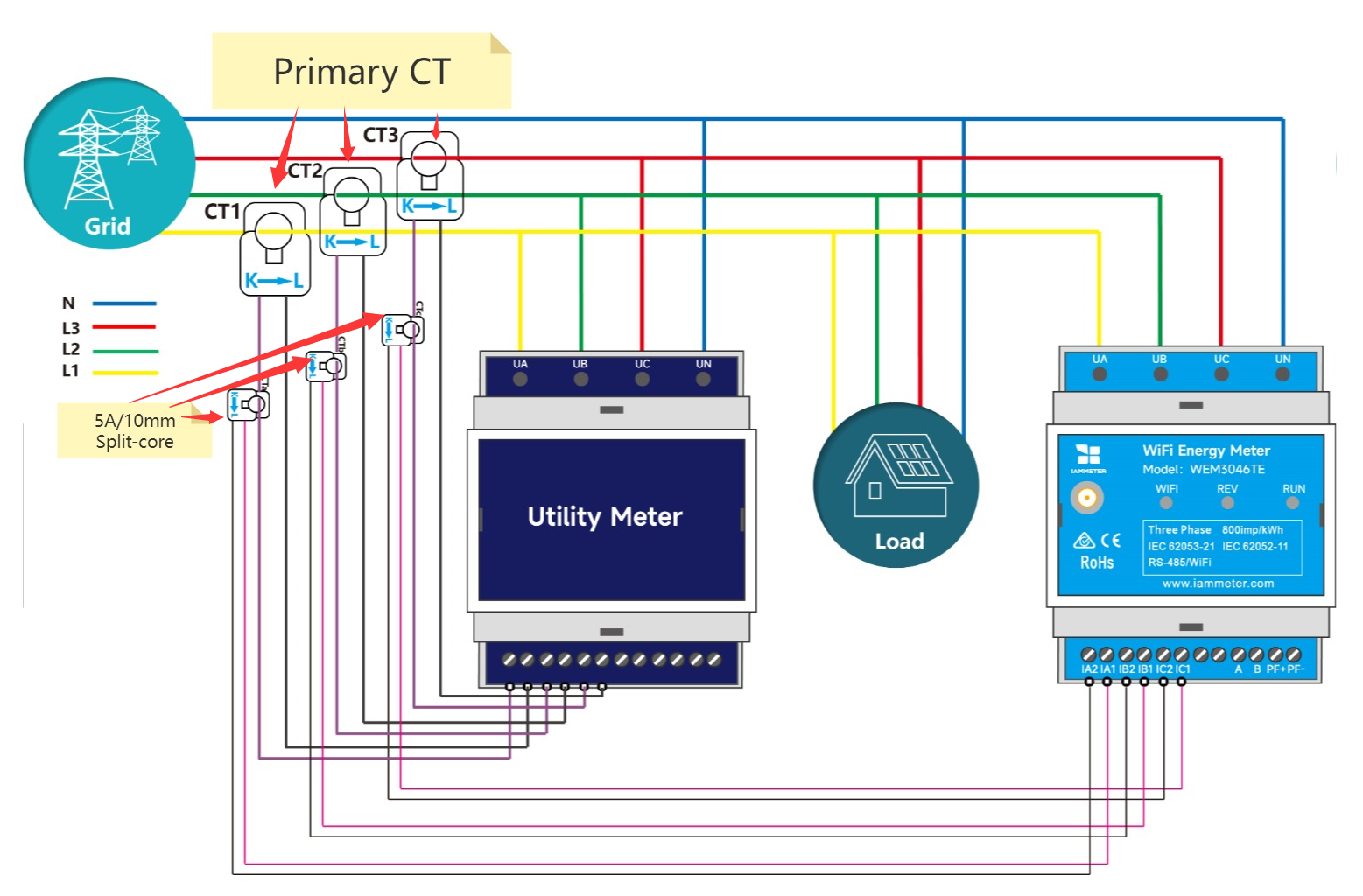
💡 Example: If your existing CTs are rated 2500A : 5A, and the WEM3046TE clamps on their 5A secondary wires, the system can effectively monitor up to 2500A per phase after you set the corresponding CT ratio in IAMMETER.
Configuration in IAMMETER-Cloud
If you are using IAMMETER-Cloud, remember to:
- Set the CT ratio based on your external CT specification (e.g., 2500A : 5A → CT ratio = 500).
- Manually define each phase’s Use Type (“Grid”, “Inverter”, or “Load”) for correct energy calculation.
Once configured, IAMMETER-Cloud will automatically compute:
- Active and reactive power per phase
- Imported and exported energy
- Total system power flow and solar self-use ratio (if applicable)
🔟 Common Wiring Mistakes
| Mistake | Description | Fix |
|---|---|---|
| CT direction reversed | Negative readings or “reverse energy” even when no inverter | Reverse CT direction |
| Phase mismatch | CT doesn’t match its voltage input | Match CTa→L1, CTb→L2, CTc→L3 |
| Neutral not connected (WYE system) | Causes unbalanced voltage readings | Connect neutral properly |
| Loose terminal | Unstable readings or intermittent loss | Tighten all connections |
📘 More details: Troubleshooting accuracy issues
Additional Tips
- Always label CTs and wires clearly during installation.
- Avoid placing CTs near large magnetic or inductive devices.
- For long-distance CT connections, use shielded twisted-pair cables.
- After installation, compare readings on IAMMETER-Cloud to verify consistency.
📞 Support
Website: https://www.iammeter.com Docs: https://www.iammeter.com/docs Email: support@devicebit.com




